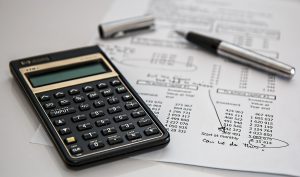Quantify your Trade Show Strategy Plan with an Event Cookbook
January 23, 2019MEET helps B2B growth companies develop and effectively leverage trade show strategy plans. One way we do this is by offering customizable tools to maximize ROI for every prospect facing opportunity.
Among our most popular tools is the Exhibitor and Trade Show ROI Cookbook (Event Cookbook). By setting goals and utilizing metrics to better inform trade show strategy plans, MEET’s Event Cookbook allows clients to quantify how events are producing across a variety of indicators and over time, opening the door to new opportunities to improve ROI.
Two functions of every trade show
At MEET, we believe exhibitors should view expo and trade fair opportunities from two perspectives: in-booth and out-of-booth engagement.
The purpose of the booth is to separate general attendees from prospects. Transaction professionals, individuals who are trained to efficiently qualify high volumes of prospects, operate inside the booth and should be evaluated using a set of metrics that reflect their unique responsibilities.
The beauty of employing transaction professionals inside the booth is that they free up your salespeople to engage in longer one-on-one meetings and competitive intelligence outside the booth. These engagement activities boost ROI in different ways and therefore must be tracked using different metrics.
(For more on how to best utilize salespeople in your trade show strategy plan, check out this post.)
Setting Goals
Differentiating between the unique revenue generating roles of your exhibiting team is the first step to utilizing the Event Cookbook. The next step is goal-setting, specifically:
Prospects Potential Revenue Goal
This is the potential value associated with prospects identified inside the booth by transaction professionals.
Agreement Signed Revenue Goal
This is the potential value associated with outcomes of one-on-one meetings between members of the sales team and existing prospects represented by closed agreements.
Partner Goal
This is the number of new strategic partners your sales team has enrolled through out-of-booth engagements.
Competitor Goal
This is the number of competitors your sales team has gathered intelligence on to better inform your trade show strategy plan, including booth offers, messaging, staffing, and event selection
Your ability as an exhibitor to estimate these figures with greater accuracy will improve over time. Calculations such as average annual revenue per customer, calculated by dividing your annual revenue by the number of customers that paid you, is among the simple input calculations we use to inform these goals.
Other valuable calculations used as inputs to your Event Cookbook include:
• # of prospects to yield an appointment
• # of prospect 1st appointments to a proposal
• # of proposals to close
Feel free to contact us any time for more guidance on how to use our Event Cookbook to set measurable trade show goals.
Calculating results of your trade show strategy plan
As described earlier, results are tracked inside and outside the booth separately based on the different roles and responsibilities of your exhibiting team. Inside the booth metrics can be broad, e.g. leads generated per day, or drilled down to leads generated per hour per person.
The power of a tool that allows you to drill down to this level of specificity lies in your ability to set personalized, daily goals for each member of your event team. A well-crafted booth offer and exhibit display will improve their likelihood for success by ensuring these leads are high-quality prospects.
For more on how to improve your likelihood of success in identifying high-quality leads, check out this post.
Outside the booth, from a sales perspective, the Event Cookbook allows you to track results such as cost per dollar of revenue, a highly valuable indicator of event success that can be used to track the ROI by event. Testing the effectiveness of your value proposition, booth offer, and staffing strategy will be reflected in this number.
To the extent that certain factors remain constant, you can also use this data to inform your event selection process and how you engage with event hosts.
Using the Event Cookbook to improve Trade Show ROI
 Collecting measurable data that paints a precise picture of how each event is performing, from leads generated, to cost per revenue, empowers exhibitors to work with event hosts to find ways to improve ROI.
Collecting measurable data that paints a precise picture of how each event is performing, from leads generated, to cost per revenue, empowers exhibitors to work with event hosts to find ways to improve ROI.
When research and experience tell you that your buyers are in attendance at a particular event but your data indicates a consistent lack of performance, that is the time to share these results with event hosts to explore how you can work together to improve ROI.
Whether it’s strategies to boost sales or lower your costs, small changes in your trade show strategy plan will show up in your Event Cookbook and can be used to inform future investment decisions.
Interested in previewing the Exhibitor and Trade Show ROI Cookbook? Email us or give us a call.
And for more on how to use metrics to inform your trade show strategy plan, check out our recent webinar: Benchmarks, Goals, Metrics, and ROI: Everything You Need to Know About Measuring Trade Show Results.
About
MEET (meetroi.com) helps B2B growth companies effectively leverage at trade shows and in-person events. MEET’s processes help its clients ramp-up sales quickly and maintain a steady stream of high-quality prospects going forward. Contact Bill Kenney at MEET today for a free trade show participation assessment bill@meetroi.com or +1 (860) 573-4821
